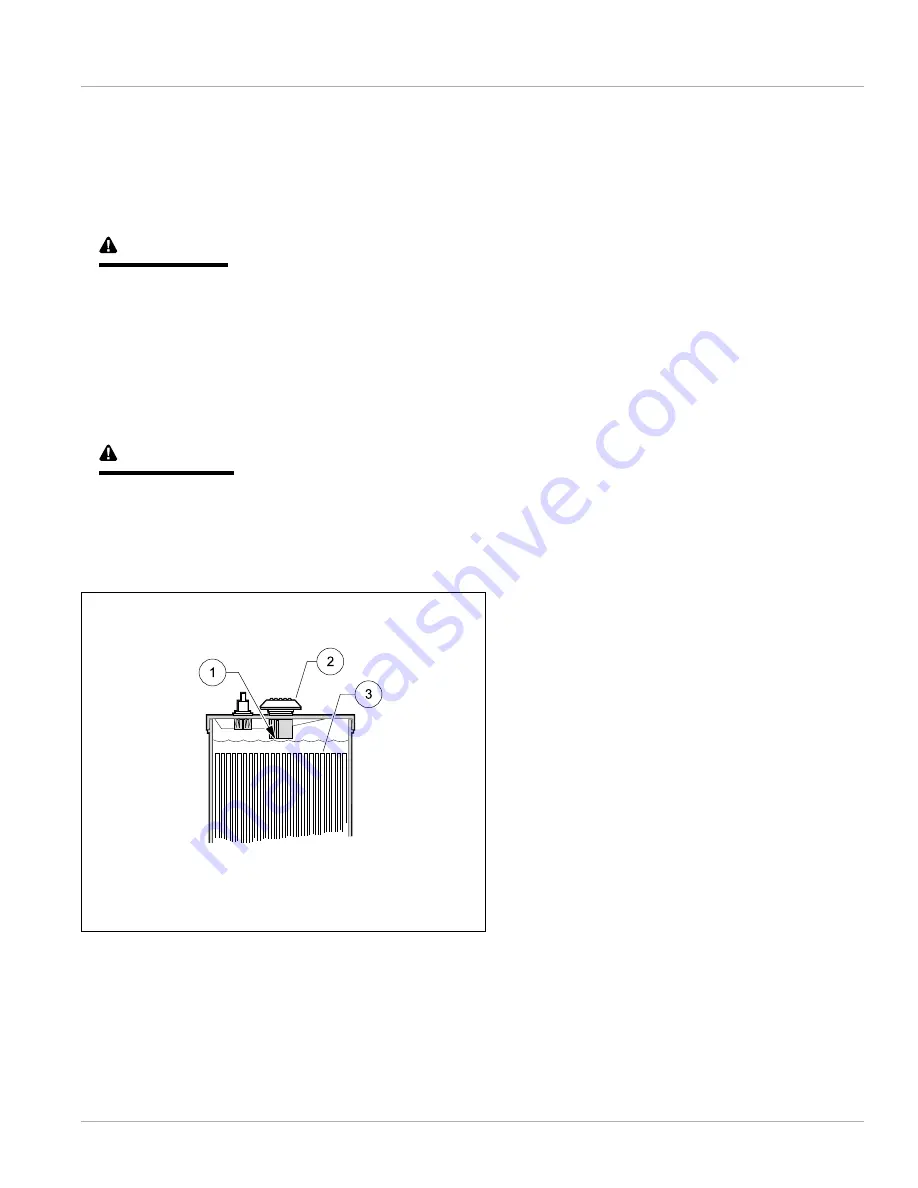
Batteries – Flooded Lead-Acid
NOTE:
Dispose of waste water properly.
2.
Check the electrolyte level weekly
(Figure 15)
. Add water only
after
charging unless the electrolyte level is below
the top of the plates. In this case, add just enough water to cover the plates, charge, and then check the level
again. Never charge batteries if plates are exposed above electrolyte level. For best battery life, add only
distilled water.
See following CAUTION and NOTE.
CAUTION
• Do not overfill the batteries.
NOTE:
A battery watering gun or bottle is available at many auto parts dealers.
3.
The battery hold-downs should be tight enough so that the batteries do not move while the vehicle is in motion,
but not so tight as to crack or buckle the battery case. Tighten hold-down retaining nuts to 72 in-lb (8.1 N·m).
The terminal connections should be clean and tight, and any worn insulation or frayed wires should be replaced.
Tighten battery terminals to proper torque.
See Connecting the Batteries – Electric Vehicles on page 12.
See following WARNING.
WARNING
• If battery wire terminals are damaged or corroded, replace or clean them as necessary. Failure to
do so may cause them to overheat during operation and could result in fire, property damage, or
personal injury.
4.
After use, charge the batteries. The batteries should never be left discharged any longer than absolutely
necessary (do not leave discharged overnight).
1
3
2
1. Level Indicator 2. Cap 3. Plates
Electrolyte level at least 1/2 inch (13 MM) above plates or to level indicator.
17
Figure 15
Battery Electrolyte Level
Precedent 4-Passenger Vehicle Owner’s Manual
Page 33
Summary of Contents for Precedent 4-Passenger
Page 2: ......
Page 42: ......
Page 43: ......
Page 44: ...Publication Part Number 103814511 Edition Code 1210A00000 103814511...










































